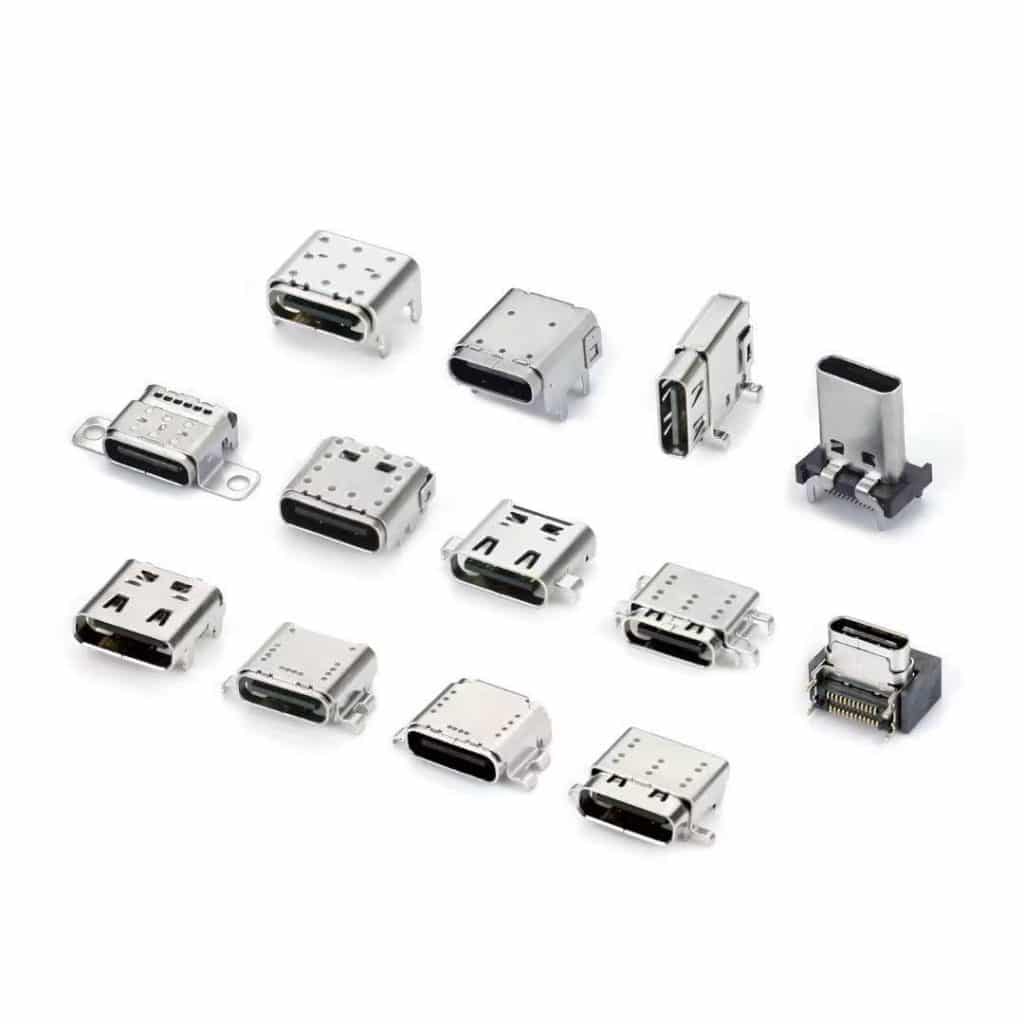USB-C Connector is gradually replacing USB-A, and product selection needs to pay attention to these
In the past decade, many connectors in the field of consumer electronics have been replaced by USB-C Connectors in the integration. But how difficult is it for USB-C Female Connector to be “universal” for terminals?
The 3.5mm audio interface gradually disappeared from mobile phones, and the Lightning interface on the iPhone and the Micro-USB interface on domestic mobile phones were gradually replaced by USB-C. For terminals, can USB-C connectors really meet the requirements of “universal use”?
In the past decade, many connectors in the field of consumer electronics have been replaced by USB-C in the integration. Nowadays, the USB-A interface is also gradually declining in the field of consumer electronics
Apple’s full embrace of USB-C may seem too aggressive to the eyes of ordinary consumers, but for the industry, this stage is indeed a good time to fully “embrace” USB-C.
Since its emergence in 1996, USB connectors and their interface specifications have been used for nearly 30 years. At the beginning of the design, the interface was designed to be universal, so that various devices on the computer gradually bid farewell to the special cable, which is convenient for users to use.
Subsequently, the interface specification of USB connectors has gone through the process from USB 1.0 to USB 4.0, and the transmission speed has gradually increased from 1.5Mbps to 80Gbps. In terms of connector form, USB-A, USB-B, Mini USB, Micro-USB, USB-C and other forms were born.
As an important role in the field of consumer electronics, the continuous upgrading of USB-c connectors has promoted the continuous progress of convenience and versatility of consumer electronics. The continuous upgrading of the latter in turn puts forward two major requirements for connector products: miniaturization and high speed.

Selecting a USB-C connectors requires comprehensive consideration of technical specifications and application scenarios:
- Dimensions: USB-A connector is rectangular design, large in size, with obvious front and back differentiation, thicker and can only be inserted on one side; The USB-C connector is an oval design, which is small in size, and can be inserted correctly regardless of the direction of insertion.
- Number of interface pins: The USB-A connector has up to 9 pins, while the USB-C connectors have 24 pins, providing more functionality and flexibility.
- Transfer speed: For applications that require high-speed data transfer (such as video editing, mass file transfer), you should choose a connector that supports USB 3.1 Gen 2 or later. For example, Amphenol’s USB 4 Gen 3 Type C connector can support data transfer rates up to 40Gbps.
- Power supply capability: For devices that require high-power charging, it is important to consider the connector’s high-voltage and high-current capabilities, as well as compatibility with the PD protocol.
- Proprietary protocol support: For devices that require high-bandwidth applications, choosing a connector that supports proprietary protocols can provide better performance and scalability.
- Environmental adaptability: In industrial and other scenarios, the use of USB-C connectors needs to consider the special requirements of the application scenario. TAKE AMPHENOL’S MUSBR SERIES USB TYPE C CONNECTORS, FOR EXAMPLE, WITH THEIR IP67 WATERPROOF AND DIE-CAST METAL HOUSINGS, MAKING THEM SUITABLE FOR AUTOMOTIVE, COMMUNICATIONS, CONSUMER, DATA, INDUSTRIAL, AND MEDICAL APPLICATIONS.
- Mounting Configuration: SMT (Surface Mount Technology):A common mounting method where the connector is soldered directly onto the surface of the PCB. This is suitable for most general applications; Mid-Mount:A mounting style where the connector is mounted within the PCB, allowing for a more compact design but potentially affecting PCB routing; Vertical or Horizontal:Choose the orientation (vertical or horizontal) that best fits your product’s enclosure and PCB layout.
In addition, the quality of the connector is also a key factor to consider, some connectors may have loose pins, at this time, if the BUS voltage pin is short-circuited to the USB 3.0 high-speed signal, the user connects to the power supply, it will have an impact on the relevant IC on the motherboard, resulting in abnormal data transmission or charging, and even complete damage to the device.
By carefully considering these factors, you can choose a USB-C connectors that meets the specific needs of your product and ensures reliable and efficient performance, according to electronic part vendors
